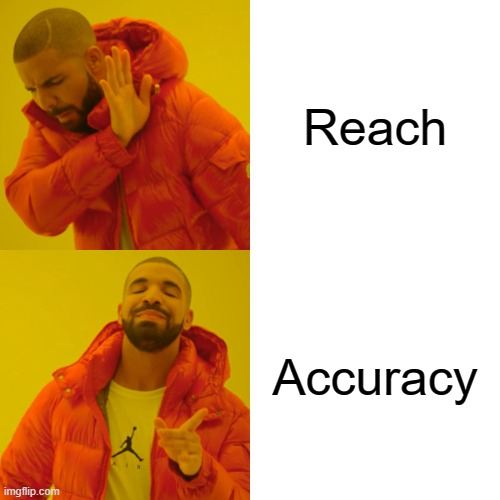It has been in the pipeline for some time now and should not come as a shock, but as we are almost mid way through this year it is worth taking stock as 3rd party cookies are getting retired. This is not something new and was announced by Google over a year ago but as the day approaches (late January / early February 2022) many are suddenly taking note. As a marketing professional and someone who loves getting my hands on as much data as I can to better deliver results I am obviously cautious although not particularly conflicted.
UPDATE - the third party cookieless world has been delayed, with phasing planned to begin mid-2023. However, the same issues will be applicable, so it's still worth keeping tabs on the announcements, and checking in with your Paid Media specialist to start planning sooner rather than later. We will of course keep you up to date with news, timelines, and advice.
Cookies, despite sounding sweet, have become such a dirty word and have been an area that has caused much controversy in recent times especially with regards to privacy - and fairly so.
The question that I often hear other marketers wonder and clients ask, is “how will it affect me?”
Remember only 3rd party cookies are on the out
There have been several more recent developments with regards to this cookie conundrum between Firefox 86 a couple of months ago which applied a Total Cookie Protection approach to largely eliminate cross-site tracking, to the most recent iOS14.5 update with the App Tracking Transparency angle (ATT).

Whilst Google has stated that their alternative is the implementation of FLoC (Federated Learning of Cohorts) as a ‘privacy sandbox’ in response to the removal of third party cookies, concerns continue to be raised regarding privacy. DuckDuckGo has gone ahead already with an extension in Chrome to eliminate this.
The question raised with all these changes occurring and some having a last minute panic over what will be the outcome is how will it affect us.
The first thing to remember with all this is that it is solely 3rd party cookies that will be impacted by this.
Just as a very succinct reminder:
First party
Cookies dropped from the site the user is on, to allow website owners to collect analytics on user behaviour on-site, and also to aid with user experience (remembering passwords and settings etc). In essence purely the behaviour on the site and solely that. This information is not available to external parties.
Third party
This is where things get interesting. Cookies dropped from an external domain fall into this category almost exclusively for the purpose of advertising, targeting, and cross-site conversion tracking. Information on behaviour from one site can be sold to another to inform them that the individual is ‘in-market’ for example and as such allow for the user to be targeted by other providers who have been sold or who have access to this data.
For more information on first-party vs third-party cookies, check out this really comprehensive and jargon free article from Clearcode.
Will this impact digital marketing?
Well. In part. But to varying degrees of intensity.
Some have suggested that the performance of 3rd party cookies is in reality somewhat underwhelming with an average targeting accuracy of 59%. If you are using the likes of double-click then you will certainly need to look at building out first party data - though if you are looking at what can be termed first-party platforms, the knock on impact is not as concerning as might first seem.
Taking Google Analytics and Ads as one example - as the property is Google owned creation of remarketing audiences within these platforms for use on these properties will largely be unaffected. Only once leaving the Google ecosystem will this be lost.
In much the same way, using social platforms such as LinkedIn, Twitter, or Facebook will drop what is a first-party cookie so that these can be retargeted to users on those respective sites - even to the extent of dynamic remarketing with specific inventory.
Upon leaving these platforms this will cease to be functional.
Now the real crux of the matter comes from buying data from other providers in order to target users they have collected information on. This in short is where the impact lies. Already blocked in Safari, DuckDuckGo and Firefox, reach here has already been limited. But this is in part what it boils down to.
The ability to learn about the user experience, retarget to them, target those who have expressed interest or intent first hand - has not changed. Audiences to that extent have not changed. As an example, if you are logged into Google on Chrome and have opted to provide your age, gender or anything else personal, then the interaction with ads on Google on its own platform will continue to allow the use of audience data to be displayed, monitored, and optimised towards - similarly with first hand provided data on LinkedIn or Facebook. However advertisers/ad sellers with no prior contact with the user will be limited in what they can actually provide.
What does it mean for marketers?
- Does it limit potential reach?
- If using third party data then yes. To an extent, FLoC tries to make use of this limitation, or even as suggested by some, the use of hashed emails.
- Does it limit accuracy?
- Well actually, likely not. If anything it would seem that if the data is of questionable accuracy to begin with as mentioned - this would likely help improve the accuracy.
- Is remarketing still possible?
- Absolutely - within the ecosystem that data is collected in though.
Marketers (and unsurprisingly data sellers) have expressed concern about inefficiencies in multi-channel targeting. Further to this some have even expressed concerns that the lack of relevancy of ads means a worsened user experience for domains with ad space.
On one hand we want relevance - and on the other, anonymity.

In reality it’s a bit of a tall ask.
The reality is likely to be a growth in the scale of walled gardens. Apple has already shown this with iOS changes where it, as a first party, has proprietary access and is also scaling up ad inventory. The question of privacy to an extent is a little moot - not so much protecting your data but really protecting who can make use of your data. But that in itself is a whole other story.
“In reality both [Google & Apple] initiatives create even deeper industry dependencies on those behemoth platforms and a reliance on aggregated data sets with delayed reporting, challenges with proper accounting for reach and frequency and a whole lot of TBD to be sorted over the coming months.” - Matt Barash, SVP global publishing and platform partnerships at Zeotap
The big question is what to do about this as digital marketers.
For specifically B2B advertisers things are a little more complicated in that reach to unknown individuals is often a hefty part of the approach based on industry, seniority, functions and so on. There are already things that can be done in preparation. Understanding the user base you can create your own first-party audience and apply a programmatic approach to this audience type within DSPs on their own networks. Regardless of this, as technologies develop, angles for this will continue to develop especially in the upcoming months.
In almost any other instance digital marketers can take a step back, a deep breath, and really start focusing on these main 3 takeaways.
3 step approach to focus your 1st party knowledge base
1. Learn your own data first hand
Create audiences within the platforms you use. Audiences are something I really have seen so much focus on recently and I can really see being the primary focus with all these changes - but coupling this with the importance of 1st party data is likely going to show itself to be vital.
For your own data encourage data collection - be it incentivised account creation or email collection. This will help you paint your own picture of who you want to focus on.
2. Use multiple channels and platforms
Yes this does play into the tech giant focus as others have highlighted but making use of advertising channels on Facebook, on Google, on LinkedIn and so on, will let their 1st party data inform you. Yes this is confined to their proprietary platforms for the most part, but knowing the audience type for example seniority in LinkedIn - can help you identify the individuals of value on Facebook. It does not need to be cross platform inventory to inform you of the audience that matters to you.
3. Review the 3rd party knowledge now
Supposing you are currently making use of third party data - the knowledge you can gain from the audience behaviours available to you can still be of huge value to you on applying learnings to other platforms.
In short - the real impact is loss of questionable reach and inherently, the potential for far greater accuracy. Of course the likes of FLoC will shift the balance again down the line and alternatives will rise and fall… but knowing your own audience better, and leveraging this well with a more optimised focus I would expect as an advertiser to see performance improve.

In short - the real impact is loss of questionable reach and inherently, the potential for far greater accuracy. Of course the likes of FLoC will shift the balance again down the line and alternatives will rise and fall… but knowing your own audience better, and leveraging this well with a more optimised focus I would expect as an advertiser to see performance improve.




